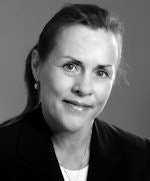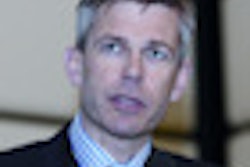
The success of teleradiology interpretation and reporting is based on the presumption of effective communication in the same language. Is communication in a foreign language feasible without compromising the integrity of a radiology report? Will the recipient understand it?
A proof-of-concept project between a health center in Finland and a university hospital in Estonia produced excellent results, which were presented at the European Congress of Radiology (ECR) held last month in Vienna. The project proved that both linguistic and cultural challenges could be met, and that reports could be prepared by Estonian radiologists that were comparable to those prepared by Finnish radiologists.
 Marianne Maass, PhD
Marianne Maass, PhD
The project compared independently prepared reports of 500 digital x-ray exams by radiologists working at the Naantali Health Centre with those prepared by radiologists working at the University of Tartu who held credentials to practice medicine in Finland. All reports were prepared in the Finnish language, and the accuracy and quality of the reports proved to be comparable.
In view of the fact that it is not feasible for all rural health centers in Finland to employ specialist consultant radiologists, the project undertaken by Marianne Maass, PhD, of the Medical Faculty, Public Health at the University of Turku, and Dr. Pilvi Ilves, PhD, chairman of the radiology department at the University of Tartu in Estonia, has potentially significant implications to augment the medical services provided by radiologists working in Finland.
AuntMinnieEurope.com interviewed Maass to learn more.
Maass has been involved in the research of teleradiology since 1996, when Finland's first PACS archive was installed at Turku University Central Hospital. She became interested in learning how cultural and linguistic differences might affect teleradiology services provided to Finnish healthcare centers by radiologists from another country.
The Finnish language is similar to that of the Estonian language. An Estonian native speaker can become fluent in Finnish within one to six months, and this has attracted Estonian physicians to practice medicine in Finland. At the University of Tartu, Estonia's national university school of medicine, there are a number of physicians proficient or fluent in Finnish who have medical licenses for both countries.
The Naantali Health Centre serves a community living about 15 kilometers from Turku in southwestern Finland. The health center offers x-ray and ultrasound exam services only. Patients who need more advanced diagnostic imaging procedures travel to Turku. For the project, the first 500 consecutive exams performed between March 2011 and May 2011 were selected. These included digital radiographs of bone, thorax, musculoskeletal, and pediatric examinations.
Maass said it took approximately five months to obtain official permission to conduct the project and to obtain a virtual private network (VPN) connection. Once in place, image transfer between the two PACS, one from Carestream Health at Naantali and the other an Impax5 (Agfa HealthCare), performed flawlessly.
"Establishing an interface between the two different radiology information systems (RIS), however, was not feasible for a proof-of-concept project," Maass said. "Although electronic transfer between RIS systems can be done, this can be expensive and laborious. Use of a suitcase was much more efficient."
After obtaining necessary permissions, Maass personally transported the anonymized patient exam requisitions and relevant medical records to Tartu's radiology department. Each patient's information had been given a coded numeric identity, which the Estonian radiologists used when preparing their own reports. Both sets of reports also returned to the University of Turku for analysis by the same means.
The original radiology reports were then compared with the reports prepared in Finnish by the Estonian radiologists with respect to both diagnosis and overall style of content. There were diagnostic discrepancies in 6% of the reviewed 1,000 reports. The remaining 94% of the reports were not identical, but did include the clinically relevant information.
"Reports with diagnostic differences were subsequently interpreted by three Finnish and three Estonian radiologists," Maass said. "We determined that errors tended to be made with very subtle findings, such as a hairline fracture of a very young pediatric patient. There were three clinically relevant and significant errors, two in Finland and one in Estonia. The percentage of mistakes was minor in this study compared to results in traditional quality-assurance studies, and possibly because the radiologists in Estonia were aware of being observed. No errors were made that were clinically significant by either group."
Each radiologist had a personal style of reporting, which may be explained by the professional history of the radiologist, culture, and requirements of the requesting unit of the report, according to the research team However, these differences were not substantial, nor did they hinder any understanding of the medical problem of the patient.
"In fact, the quality of reports was comparable at both sites. We think that this shows quality assurance may be performed with a remote teleradiology service provider working from another country. Cooperation is possible, and we found that all participants were enthusiastic about the project," Maass said.
The research team from both Finland and Estonia hope that the results of this study may help in the future to build teleradiology networks among nations. Maass noted there is a need for teleradiology services in Finland throughout the country. The problem is that the capital outlay for equipment and to establish a secure, virtual private network among hundreds of small hospitals and clinics offering radiology services is significant, and the volume of exams from each facility would be low. "This requires substantial funding. It also presumes that reports would be provided to the referring physician and to hospital emergency departments in Finnish. So far, there hasn't been a company that wants to take the financial risk and establish this service," she concluded.



















